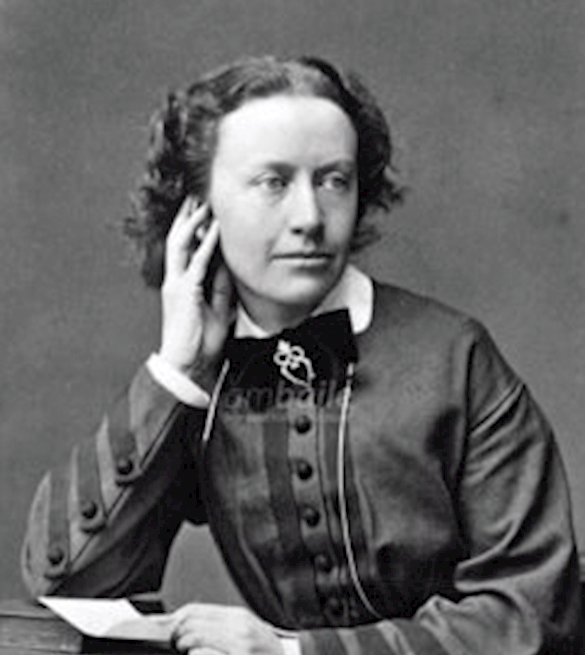EVERY obituary and personal reminiscence of Jane Elizabeth Waterston, even those written by her closest friends, mentions her forceful character. They describe her as "frank and fearless” and possessing a complete self-belief. Perhaps it is unsurprising that she was all these things because without such attributes she could hardly have achieved what she did at a time, and in a world, where women were neither meant to receive a higher education nor destined for leadership.
Born in Inverness, she enjoyed an affluent childhood as the daughter of a bank manager. In the year of her birth, the Free Church of Scotland split from the Established Church. Although her family remained affiliated with the latter, she became an adherent of the new Free Church whose commitment to missionary work was to shape her life and career.
In 1866, she made contact with Dr James Stewart, a Free Church missionary who led the Lovedale Missionary Institute in South Africa. The following year she set sail for the colony to begin a new role as the first superintendent of the new girls’ school there. As she did with everything else in her life, she immersed herself in the work and devoted all her efforts to the task. The schoolgirls in her charge, seeing her tireless energy and constant hard work, quickly gave her a nickname in their own language — Noqakata — Mother of Activity.
Although she achieved much in her teaching role, her real ambitions lay elsewhere. After seven years working at the school, she was heartened by the news that medical education for women was now a possibility, and she returned to Europe. Now in her thirties, she embarked first on her training as a nurse, a midwife and then a doctor. She was amongst the first women to train in medicine at the London School of Medicine for Women, from which she graduated in 1880.
The length and quality of her service in South Africa is reflected in the number of awards and honours that were showered upon her
She returned to Africa, this time to the Livingstonia Free Church Mission in Nyasaland. However, she was quickly disillusioned by both her fellow missionaries’ poor regard for black Africans and in turn their suspicions of her as a female physician. Indeed, they did not take her work seriously and regarded her as merely on the look-out for a husband.
Within the year, she had returned to the Lovedale Mission where she worked as a doctor for three years before moving to set up practice in Cape Town. There she would spend the rest of her career and her life.
Her most significant contribution was establishing the Ladies’ Branch of the Free Dispensary, which provided valuable obstetric services to the Cape Town poor. Controversially, she would only accept married women as patients, but this was more a result of her pragmatism rather than her religious beliefs. She wanted women to be supported and certainly had no concern when the marriage took place in relation to the birth.
Over several decades, she became a well-known face in the poorer districts of the city, where she would attend countless confinements. Interestingly she noted: “I am also getting more black patients. They feel, I think, that I treat them like human beings.” While undoubtedly part of the British Empire’s colonial machine, today Waterston is nevertheless regarded in Africa as “a representative of that slender strand of liberalism that runs through South African history”.
The length and quality of her service in South Africa is best recognised through the number of awards and honours that were showered upon her, especially later in life. These included an honorary doctorate of law from the University of Cape Town and being made only the second woman appointed Fellow of the Royal College of Physicians of Ireland. Not all honours, however, were acceptable to her. As one of the first members of the British Medical Association’s branch in South Africa, her associates there wished to honour her by having her portrait painted by a leading South African artist. Unfortunately, they were thwarted by her steadfast refusal to sit for the painting. She also eschewed the award of Dame of the British Empire, objecting to the very notion of the title, saying it would make her sound “like a witch on a broomstick.”
A lifelong climber, she was still trekking up Table Mountain in her eighties and died in her ninetieth year. Doubtless, the spectacular views over the Cape after those climbs allowed her the time and space to reflect on a lifetime of service to her patients. In her customary, understated way, she wrote: “I am satisfied with the profession I have chosen. When most worried I have never wished myself not a Doctor."
Sources
- E. van Heyningen. Journal of Medical Biography, 1996; 4: 208-13.
- Obituaries, South African Medical Journal, Nov 12, 1932 and Nov 26, 1932.
- L. Bean & E. van Heyningen (eds). The Letters of Jane Elizabeth Waterston, 1866-1905.
This page was correct at the time of publication. Any guidance is intended as general guidance for members only. If you are a member and need specific advice relating to your own circumstances, please contact one of our advisers.
Read more from this issue of Insight Primary

Save this article
Save this article to a list of favourite articles which members can access in their account.
Save to library

